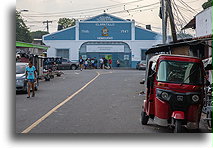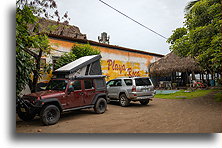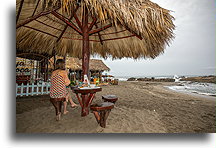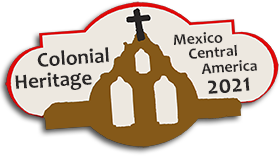Two border crossings
October 29
We woke up at sunrise, just like locals around us. They do not have running water. Women and children therefore have to carry buckets of water to fill the larger containers near their sheds where they live. We did not know that Balios was parked on their daily water path. The locals were passing between the car and our table while we were eating a breakfast. Water is used, among other things, for washing. But forget about drying clothes. We saw a man who picked up the pants that his wife had just washed, shook off the excess water by hitting a tree trunk, got dressed and left.

After a quick breakfast, we left the village at 6 am. The El Salvador-Honduras border took us three hours. This was mainly due to a corrupt official. He deliberately delayed work on our car permit in Honduras. As it turned out later, he wanted us to get tired of standing at the window. Impatient, waiting-weary travelers are more likely to pay higher fees. He outsmarted us and we ended up paying almost double the official price.


It takes exactly two hours to drive through Honduras to reach the Honduras-Nicaragua border. There is nothing interesting to see along the way so we did not stop anywhere. After another two hours at the second border of a day, we were in Nicaragua. The next few hours on the way and at 7 pm we reached the Pacific coast, this time in Las Peñitas. We stayed at the Playa Roca Motel situated on the beach. They let us camp overnight and luckily, they had a restaurant so we could avoid another pasta night.









